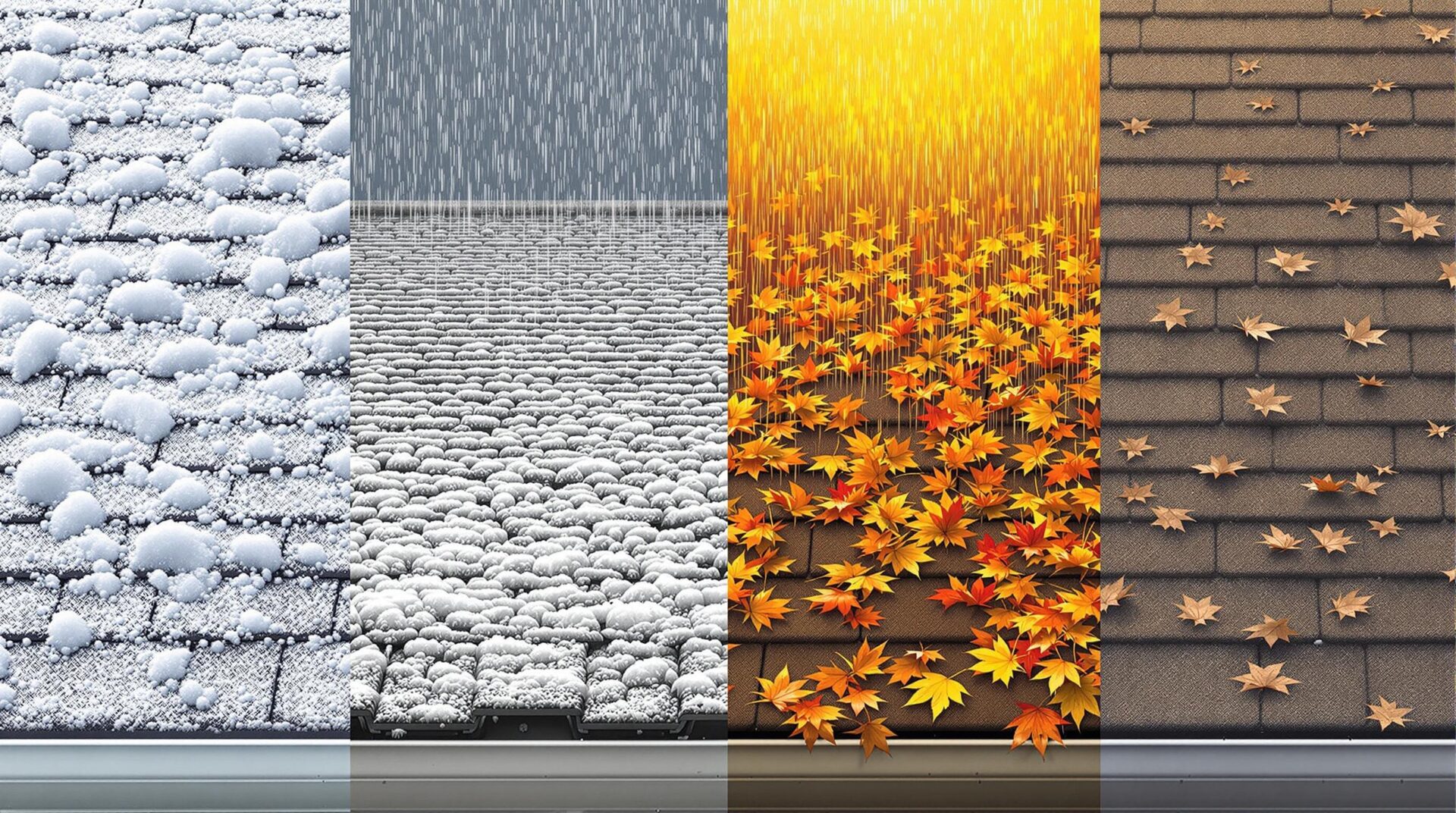
Illinois Weather Is Destroying Your Roof: How to Stop Hidden Damage Now
Illinois experiences extreme weather shifts throughout the year, from heavy snowfall and ice storms in the winter to high heat and thunderstorms in the summer. These changing conditions put immense stress on your roof, gradually wearing it down and increasing the risk of damage. Understanding how seasonal weather impacts your roof—and taking proactive steps to protect it—can save you from expensive repairs.
Winter: Ice, Snow, and Freezing Temperatures
Winter brings snow accumulation, ice dams, and freeze-thaw cycles that can take a serious toll on your roof.
- Ice Dams: When warm air escapes from your attic, it melts snow on your roof. As the water refreezes at the edges, ice dams form, preventing proper drainage and leading to leaks.
- Heavy Snow Load: Wet, heavy snow can strain your roof’s structural integrity, increasing the risk of sagging or collapse.
- Shingle Cracking: Fluctuating temperatures cause roofing materials to expand and contract, potentially cracking asphalt shingles.
Prevention Tips:
- Improve attic insulation to prevent uneven melting.
- Use a roof rake to safely remove excess snow.
- Ensure proper ventilation to minimize condensation buildup.
Spring: Heavy Rain and High Winds
Spring in Illinois often means torrential downpours and unpredictable storms that test your roof’s durability.
- Wind Damage: Strong winds can lift, loosen, or completely tear off shingles, exposing your roof to leaks.
- Gutter Overflow: Clogged gutters prevent water from draining properly, leading to foundation issues and roof rot.
- Leak Formation: Even minor cracks in flashing or shingles become entry points for water intrusion.
Prevention Tips:
- Inspect your roof after every major storm for missing or damaged shingles.
- Keep gutters clear of debris to ensure proper drainage.
- Schedule a professional roof inspection to catch early signs of damage.
Summer: Intense Heat and UV Exposure
Long hours of sun exposure can degrade roofing materials over time, making your roof vulnerable to cracks and leaks.
- Shingle Deterioration: Asphalt shingles lose protective granules, reducing their effectiveness.
- Thermal Expansion: High heat causes roofing materials to expand, which can loosen nails and create gaps in flashing.
- Increased Energy Costs: A poorly insulated roof absorbs more heat, making your home harder to cool.
Prevention Tips:
- Consider reflective roofing materials or coatings to reduce heat absorption.
- Ensure proper attic ventilation to prevent overheating.
- Check for signs of curling or blistering shingles, which indicate heat damage.
Fall: Falling Leaves and Temperature Swings
The transition from summer to winter comes with fluctuating temperatures and increased debris buildup on your roof.
- Clogged Gutters: Leaves and twigs accumulate in gutters, blocking drainage and increasing the risk of water pooling.
- Moisture Retention: Damp leaves trapped on the roof can create an environment for moss and algae growth.
- Early Freeze Damage: Sudden cold snaps can cause shingles to contract, leading to cracks or curling.
Prevention Tips:
- Clean gutters regularly to prevent blockages.
- Trim overhanging branches to reduce debris accumulation.
- Schedule an end-of-season roof inspection before winter sets in.
How Leo Exterior Restoration Can Help
No matter the season, your roof needs year-round protection to withstand Illinois’s ever-changing climate. At Leo Exterior Restoration, we offer professional inspections, repairs, and preventative maintenance to keep your roof in peak condition.
Don’t let seasonal weather catch you off guard—contact us today or visit our website to schedule a roof assessment.
